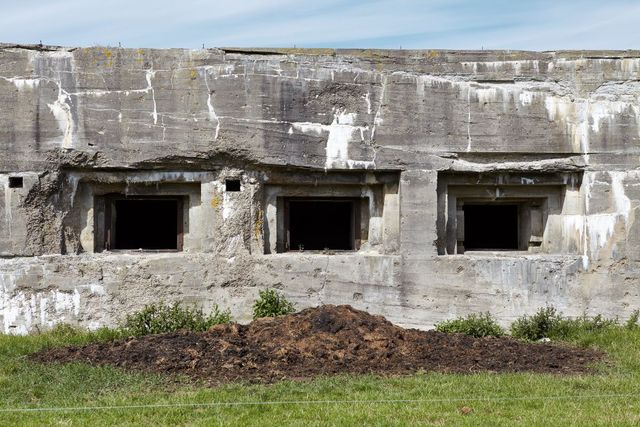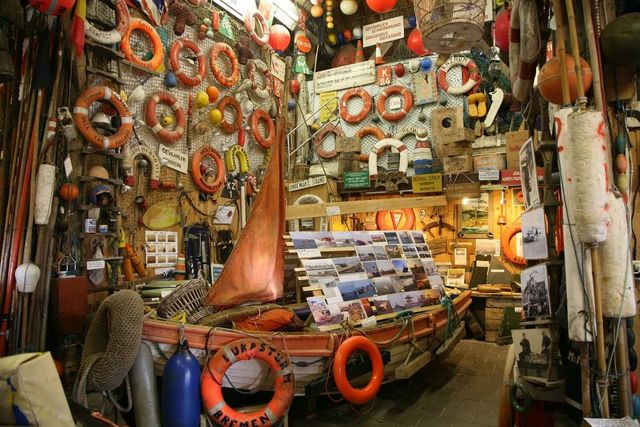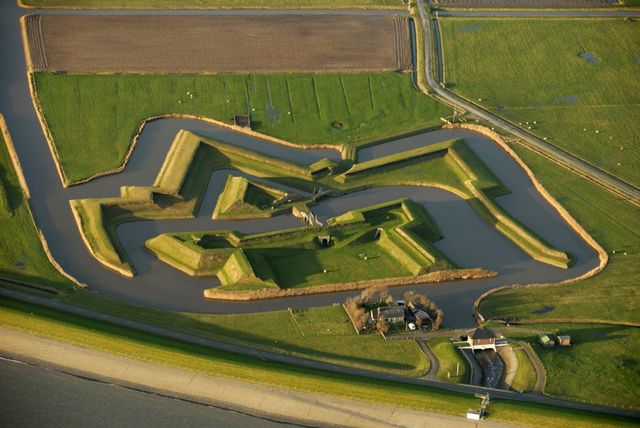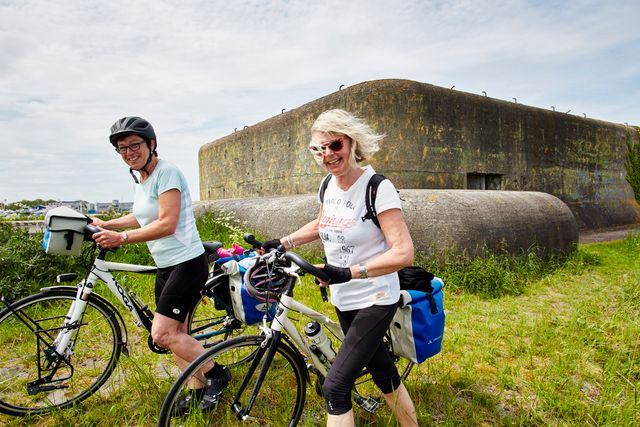Texel is strategically located on the Wadden Sea and straight across from Den Helder and Marsdiep. William of Orange ordered the first fortifications of Texel, Fort de Schans. Napoleon also realised the importance of De Schans and expanded it further. During the Second World War, the Germans added more than 500 bunkers to the island. Visit the remains of the Atlantikwall and admire the star-shaped fort near Oudeschild. Discover the traces left on Texel by friend and foe.
The Georgian uprising left its scars on Texel. Take your time and reflect on this impressive and tragic story.

Discover everything you want to know about life at sea. Admire the exhibition of treasures from the seabed - from personal
property to tools of war.

Go and explore the two remaining bunkers of the Texla bunker complex on Bunker Day.

Be astounded by the large number of the most unusual things found on the beach. They even have war paraphernalia,
such as weapons, munitions and plane engines on display.

Join a tour of De Schans and discover this early form of coastal defences with a guide.

The war in Texel ended violently with the bloody uprising of a Georgian battalion. An impressive story. Visit the Aviation and War Museum and discover how the war marked Texel.
Read more
Forts such as Fort de Schans, were built with local materials. It meant they blended in with the natural environment and added a little. Just like the terps, mounds and dykes, the forts came from the landscape itself. During the inter-war period, Texel became part of the Stelling Den Helder defences and several coastal gun emplacements were built. This was a turning point - it was the first time that the Wadden landscape was subordinated to military strategic principles on a large scale.
Copyright video: Texel360Fotografie
The scale of the Atlantikwall was of a different order than any of the earlier fortifications. It was a massive project, organised centrally from Berlin. The local commanders were given standard designs, which they needed to carry out in accordance with strict guidelines. The materials - mortar, sand, gravel and steel wire - were supplied from elsewhere. In essence, this was a heavy industrial intervention in the existing Wadden landscape. At the same time, the construction also depended on the shape of the Wadden landscape. Coastal gun emplacements and other forms of coastal defences were shaped by the coastline. On Texel it was particularly important to defend access to Marsdiep. The gun emplacement Den Hoorn on the southern side of the island was to deal with this.
The Wadden landscape is constantly moving, and the sea affects its appearance. Erosion meant that various bunkers disappeared into the sea after the war. During the floods of 1953 many of the bunkers fell from the dunes to the beach, where they were removed. Yet the scars of the war have not been erased completely by either nature or humans, and they still form part of the appearance of Texel.
The Atlantikwall changed the landscape of the Wadden island and characterized the coast of the Wadden. You can now see and experience the story behind this fascinating World War II heritage.

You can discover the military heritage of the Wadden region here. Join an exciting search through accessible bunkers and museums. And experience the unique stories behind this fascinating heritage.
